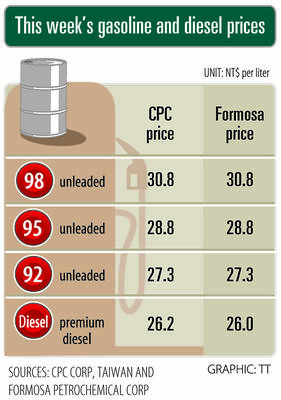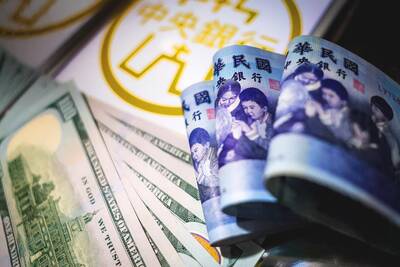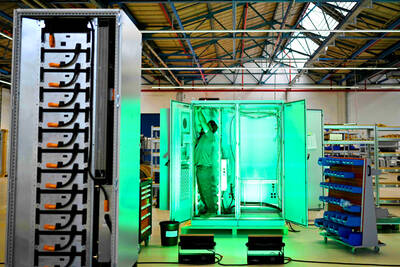US stocks declined after a government report showed the unemployment rate rose more than forecast in June, suggesting that any economic recovery may falter as consumers become more reluctant to spend.
"There is still weakness in the employment situation," said Michelle Clayman, chief investment officer at New Amsterdam Partners, which manages US$1.8 billion in New York. "We need to see more of the underlying economic numbers turning around for the market to have legs."
AT&T Corp dropped as Standard & Poor's lowered its credit rating on the biggest US long-distance telephone company.
The Standard & Poor's 500 Index lost 8.05, or 0.8 percent, to 985.70. The Dow Jones Industrial Average declined 72.63, or 0.8 percent, to 9070.21 and the NASDAQ Composite Index sank 15.27, or 0.9 percent, to 1663.46.
In the holiday-shortened week, the S&P 500 rose 1 percent for its fifth weekly gain in six. The Dow climbed 0.9 percent and the NASDAQ jumped 2.4 percent, its biggest advance in five weeks. US exchanges closed at 1pm on Thursday and remained closed Friday for Independence Day.
Interest rates
Stocks have rallied since March as some investors bet that the lowest interest rates in 45 years and a US$350 billion package of federal tax cuts will help drive economic growth. The S&P 500 surged 15 percent in the second quarter, reaching its highest in about a year on June 17.
AT&T dropped US$0.46 to US$19.42. Standard & Poor's cut the company's debt to the second-lowest investment grade because of increased competition and sluggish sales.
About three stocks fell for every two that rose on the New York Stock Exchange. More than 761 million shares changed hands, about half of the average for a full day in the past three months.
All 10 of the industry groups in the S&P 500 declined.
Technology shares, which have been the market's best performers this year, led the drop. Microsoft Corp, the world's biggest software maker, fell US$0.43 to US$26.45 and Intel Corp, the No. 1 semiconductor producer, lost US$0.48 to US$21.73. The S&P Information Technology Index is up 20 percent this year versus a 12 percent gain for the S&P 500.
Tech sector
"The market may have gotten ahead of itself, in particular the tech sector," said Clayman.
The US unemployment rate jumped to 6.4 percent, the highest since April 1994, from 6.1 percent in May. Economists had predicted 6.2 percent, the median forecast of 69 estimates from a Bloomberg News survey. The economy lost 30,000 jobs last month, the Labor Department said. Economists had forecast no change in June payrolls.
A weekly report on new claims for unemployment insurance also was worse than expected. The Labor Department said initial jobless claims rose last week to 430,000 from a revised 409,000.
Economists surveyed by Bloom-berg News had forecast 410,000 new claims.
The Institute for Supply Man-agement said its non-manufacturing index jumped to 60.6 in June, the highest since September 2000, from 54.5 a month earlier.
"Employment tends to be a lagging indicator," said Vladimir de Vassal, head of quantitative research at Glenmede Trust Co, which manages US$12 billion in Philadelphia. The service-industry report "provides greater assurance that the economy will be improving in the second half of 2003 and into next year," he said, and that means stocks will rise in the next year.
Leaders & losers
Adaptec Inc declined US$0.84 to US$7.60. The maker of circuit cards that speed up the connections between computers said sales in the quarter ended June 30 were US$107 million. It had previously forecast US$115 million to US$120 million.
Micrel Inc dropped US$0.86 to US$10.12. The maker of semiconductors for computers and communication gear said second-quarter revenue fell 3 percent to 4 percent from the previous quarter. It had forecast an increase of 3 percent to 5 percent.
Documentum Inc, which makes document-management software, plunged US$4.06 to US$15.69. The company said second-quarter revenue was US$68 million, below the US$72 million to US$73 million it expected.
Knight Trading Group Inc, the biggest market-maker of NASDAQ Stock Market securities, surged US$1.83 to US$8.50 after the company said second-quarter profit will be double its earlier forecast because trading picked up. The 27 percent surge was the stock's biggest in more than four years.
Ameritrade Holding Corp, the second-biggest shareholder in Knight after Merrill Lynch, rose US$0.46 to US$7.88.
Boston Scientific Corp, a medical-device maker, added US$0.53 to US$62.56. The company said it plans to hire 1,200 people and spend more to market a new heart stent that helped boost sales in the second quarter.

SETBACK: Apple’s India iPhone push has been disrupted after Foxconn recalled hundreds of Chinese engineers, amid Beijing’s attempts to curb tech transfers Apple Inc assembly partner Hon Hai Precision Industry Co (鴻海精密), also known internationally as Foxconn Technology Group (富士康科技集團), has recalled about 300 Chinese engineers from a factory in India, the latest setback for the iPhone maker’s push to rapidly expand in the country. The extraction of Chinese workers from the factory of Yuzhan Technology (India) Private Ltd, a Hon Hai component unit, in southern Tamil Nadu state, is the second such move in a few months. The company has started flying in Taiwanese engineers to replace staff leaving, people familiar with the matter said, asking not to be named, as the

The prices of gasoline and diesel at domestic fuel stations are to rise NT$0.1 and NT$0.4 per liter this week respectively, after international crude oil prices rose last week, CPC Corp, Taiwan (台灣中油) and Formosa Petrochemical Corp (台塑石化) announced yesterday. Effective today, gasoline prices at CPC and Formosa stations are to rise to NT$27.3, NT$28.8 and NT$30.8 per liter for 92, 95 and 98-octane unleaded gasoline respectively, the companies said in separate statements. The price of premium diesel is to rise to NT$26.2 per liter at CPC stations and NT$26 at Formosa pumps, they said. The announcements came after international crude oil prices

DOLLAR SIGNS: The central bank rejected claims that the NT dollar had appreciated 10 percentage points more than the yen or the won against the greenback The New Taiwan dollar yesterday fell for a sixth day to its weakest level in three months, driven by equity-related outflows and reactions to an economics official’s exchange rate remarks. The NT dollar slid NT$0.197, or 0.65 percent, to close at NT$30.505 per US dollar, central bank data showed. The local currency has depreciated 1.97 percent so far this month, ranking as the weakest performer among Asian currencies. Dealers attributed the retreat to foreign investors wiring capital gains and dividends abroad after taking profit in local shares. They also pointed to reports that Washington might consider taking equity stakes in chipmakers, including Taiwan Semiconductor

A German company is putting used electric vehicle batteries to new use by stacking them into fridge-size units that homes and businesses can use to store their excess solar and wind energy. This week, the company Voltfang — which means “catching volts” — opened its first industrial site in Aachen, Germany, near the Belgian and Dutch borders. With about 100 staff, Voltfang says it is the biggest facility of its kind in Europe in the budding sector of refurbishing lithium-ion batteries. Its CEO David Oudsandji hopes it would help Europe’s biggest economy ween itself off fossil fuels and increasingly rely on climate-friendly renewables. While